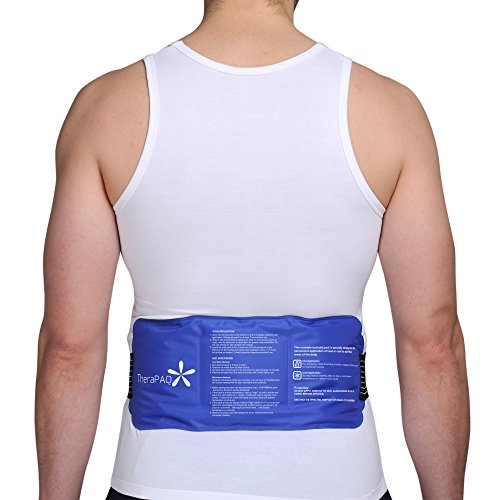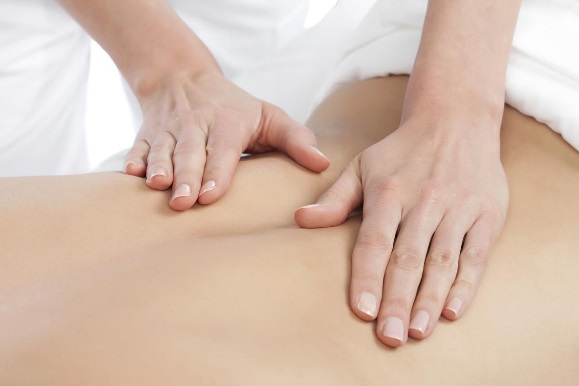 Most people will experience lower back pain some time during their life. Located in the lumbar region, this part of your back begins just below the ribcage. Often, pain in this area will heal by itself, which is fortunate because when it occurs, it is often bad enough to cause many to skip work. However, it is important to know the different types and causes of the pain because not all conditions get better on their own. Some cases require medical attention and treatment.
Most people will experience lower back pain some time during their life. Located in the lumbar region, this part of your back begins just below the ribcage. Often, pain in this area will heal by itself, which is fortunate because when it occurs, it is often bad enough to cause many to skip work. However, it is important to know the different types and causes of the pain because not all conditions get better on their own. Some cases require medical attention and treatment.
Causes of Lower Back Pain
1. Muscle Strain or Sciatica
When you lift a heavy object, you can strain the muscles in your back. If the strain or injury is bad, a disc in your back may rupture or bulge out. When this happens, it can put pressure on your sciatic nerve. The pain can hurt quite a bit, running from your buttock and spreading down one of your legs. This condition is known as sciatica.
2. Your Job
There are several types of jobs that require pulling, pushing and lifting. When you are performing these kinds of movements, you can twist and injure your spine. However, even if you have a desk job, you are not safe from back injury. Sitting all day can be bad for your health in so many ways, including promoting slouching which is one of the most common causes of lower back pain.
3. Your Bag
Have you ever lifted your purse and wondered what the heck is in this thing? Is your backpack full of more things than books? While you may not think of the excess weight might lead to back pain, you are wrong. Whenever you carry something heavy over your shoulder, you run the risk of a back injury. Think about how it is all connected. Your lower back must bear the weight of your upper body and everything you carry with it. You can easily strain and injure your back if you have to carry large loads every day.
4. Your Workout
If you go to the gym on a regular basis, it is important not to overdo it. When you overextend your muscles, you can injure your lower back. The same thing can happen when golfing. Your risk for injury is higher if you only do strenuous activity during the weekend, with little or no exercise during the week.
5. Your Posture
Slouching causes your body to put undue stress on your lower back because it shifts your weight. If you have to sit a lot, get a resting stool for your feet and a chair with lumbar support. When you must stand for long periods, try to balance your weight evenly between your feet.
6. Disc Injury
In between the vertebrae of your back (the bones in your spinal column) are discs designed to cushion them. The discs work to prevent the vertebrae from rubbing against each other and are designed to absorb shock caused by lifting, walking, twisting and other activities. When a disc is injured, it can no longer do its job and this is one of the causes of lower back pain.
7. Spinal Stenosis
The vertebra in your spine provides support for your upper body. It gives your back the stability it needs to allow us more flexibility. Nerves can be found going through the length of the spinal cord. They work as a messenger, bringing signals from the brain to other parts of the body. Spinal stenosis occurs when these nerves get damaged. When this happens, every day activities like walking can be impaired and painful.
8. Abnormal Spine Curvatures
There is a normal curve to your spine. You should actually have two curves along the straight line of your spine – one at your lower back and one at the top of your shoulders. If your spine forms a C or S curve going from one side to the other side of your back, you are experiencing abnormal curvature. This is also known as scoliosis.
Ways to Help
1. Try Yoga

If you have been suffering from back pain for longer than three months, you might want to try yoga to relieve the discomfort. Studies have found that people who incorporated yoga in their routine for at least 12 weeks experienced less back pain than individuals who were only counseled on how to manage the pain.
2. Make Your Back Stronger
The stronger your back is, the lower your risk of injuring will be. There are two main types of back strengthening movements – extension and flexion exercises. An extension exercise used to strengthen your lower back would be leg lifts while lying face down. This is a bending backward movement. The other type of strengthening workout is flexion exercise, in which you would stretch your back and hip muscles by bending forward.
3. Apply Cold Therapy

If you have been injured by one of the causes of lower back pain and have been told to rest, try cold therapy. Simply apply a frozen gel pack or ice pack to the injury. It will reduce inflammation and relieve pain as it numbs the area. If you don’t have an ice pack, you can use a frozen bag of vegetables. Do not apply cold for more than 15 minutes and make sure you put a cloth between the cold pack and your skin. You can start by administering once an hour and then gradually reducing to three times a day as the pain fades.
4. Use Moist Heat
If you have chronic lower back pain that comes and goes over a long period of time (such as several months or even years), consider using moist heat therapy. Heat works to stimulate blood flow while relaxing your muscles. There are different ways to apply this treatment. You can use herbal or rice bags that can be quickly heated in the microwave. You can also get heat to the injured area by soaking in a warm water bath mixed with Epsom salt. In either case, keep treatment to no more than 20 minutes and make sure the bag or water is not too hot.
5. Try Massage Therapy

Not all causes involve joints and bones. Often, the culprit is a muscle strain or pull. When this type of injury occurs, it is accompanied by inflammation, spasms and pain. Deep tissue massages are designed to target these areas. Look for an experienced and licensed massage therapist who has worked on pelvic and lower lumbar areas. Keep your sessions to 30 minutes and drink plenty of water afterwards.
6. Seek Medical Attention
If you have tried home care and none of it is doing anything to relieve your pain, it is probably time to see your doctor. Before recommending a treatment, your doctor will order tests to pinpoint the cause of your pain. He will look to see if you have a pinched nerve, herniated disc, an infection, arthritis, osteoporosis, cancer and other possible conditions.
To help control your discomfort and pain, you may be prescribed a painkiller. Diagnostic tests may include bone scans, x-rays, blood tests, nerve studies, CT scans and MRI exams. Eventually, you may have to see a specialist in orthopedics, rheumatology or neurology.
